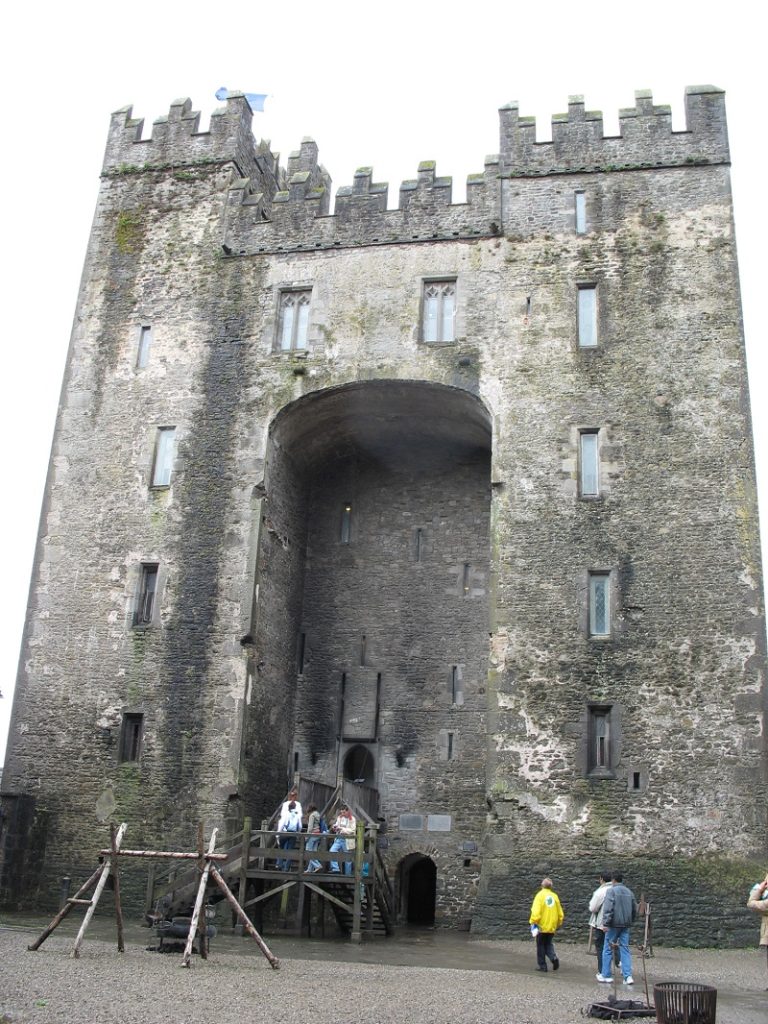If you fly into Shannon Airport (SNN), Bunratty Castle is only ten minutes by car from the airport. I can’t say I would recommend jumping in a manual rental car (which I do know how to drive) and navigating the roads from the left lane with a paper map on little sleep after an international flight from the US, but that was how I started my first trip to Ireland in 2006. What can I say – when you’re in your 20’s these things don’t occur to you!
Bunratty Castle Through the Years
Bunratty is a very imposing structure; basically a giant stone column rising from the ground. A Norman motte and bailey design was first built in 1250 with a wooden keep. The land was later granted to another Norman (Thomas De Clare) in 1276 and the wooden keep was replaced with a stone version for more protection. However, in 1287, while De Clare was in England, the Irish attacked and destroyed the castle. De Clare returned, rebuilt and added fortifications.
A motte is a hill that a castle keep sits on; the bailey is a walled area surrounding the motte, usually further protected by a ditch encircling the entire site.
The castle passed to De Clare’s son Richard until he was killed in battle in 1318. When his wife heard he was dead, she fled Bunratty and burned the castle (and entire town) behind her. Because the site is a strategic location near the waterways to Limerick, a third castle was built by another Norman lord tasked with protecting the area in 1353 – only to be captured by the Irish soon after completion. I can’t find a record if this castle was destroyed or just remodeled, but we do know that the present structure was built around 1450 by a chieftain of the MacNamara clan.
The castle changed hands (likely through strategic marriages) and spent several hundred years as the home of the O’Brien family. In the early 19th century, the Studdard family which had owned it for a couple hundred years moved out to a more comfortable manor house as was the fashion of the day and the site was left to decay until purchased by a private citizen in the 1950’s and the Office of Public Works worked to restore it, opening it to the public in the 60’s.
Post Sources:
[bg_collapse view=”link” color=”#4a4949″ icon=”arrow” expand_text=”Show More” collapse_text=”Show Less” ]
Ryan, William. A Survey of Monuments of Archaeological and Historical Interest in the Barony of Bunratty Lower, Co. Clare: Part 4: Castles and Tower Houses C.1500: Chapter 33: Bunratty Parish: Bunratty Castle, Clare County Library, Accessed May 2, 2021.
Shannon Heritage. Bunratty Castle & Folk Park, Accessed May 2, 2021.
The Original Durty Nellys. Accessed May 2, 2021.
[/bg_collapse]
Bunratty was the first Norman castle I ever toured. Since then I’ve gone through several and at times I’ve heard conflicting stories. Stairs in castles seem to have the most controversy, as I’ve heard it as both fact and fiction that:
- Stairs are purposefully built at different heights so that charging invaders will stumble on them; ie “stumble stairs”
- Stairways curve clockwise so that invading soldiers don’t have as much room to swing upwards as a defending soldier charging downward
I can’t seem to find a true source to settle the account, so I’ll leave it to you to decide! Both of those seem reasonable to me!
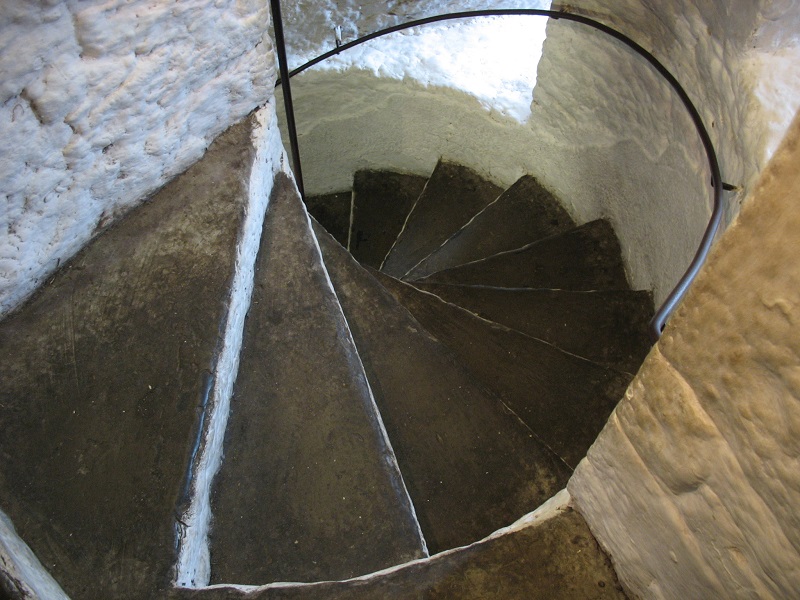
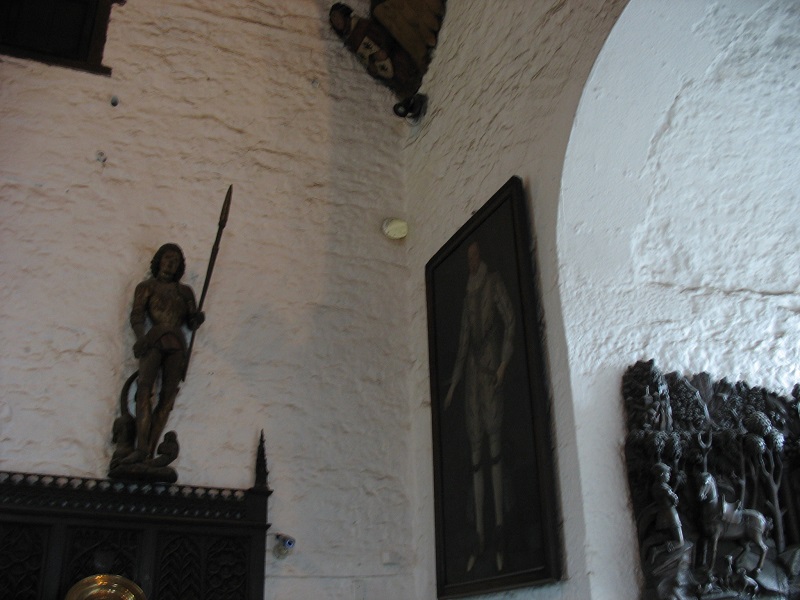
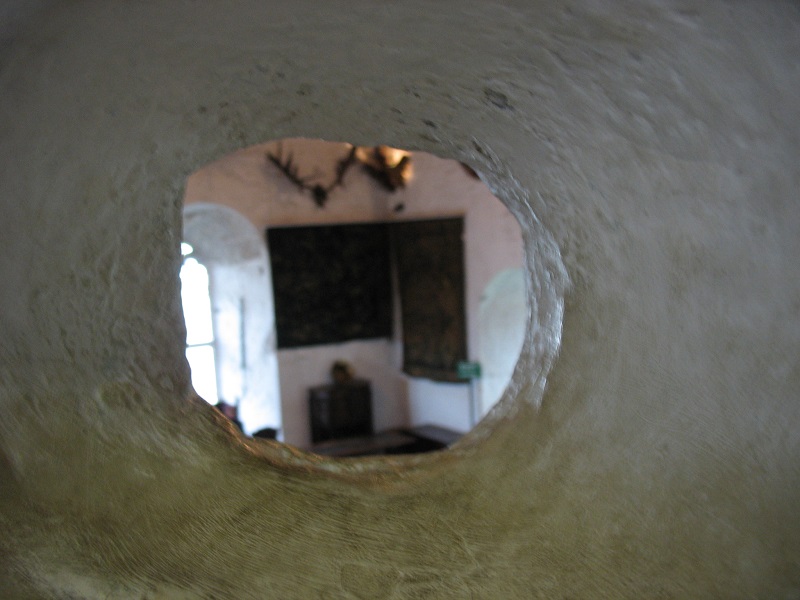
Inside the Great Hall in Bunratty is a “spy hole” that would have been covered by a tapestry. From this spot, the Lady of the castle (or anyone, really) could sit out of sight and listen to the conversations happening below. Above Left: The hole is just above the center of the photograph Above Right: looking through the hole into the Great Hall
Bunratty Folk Park
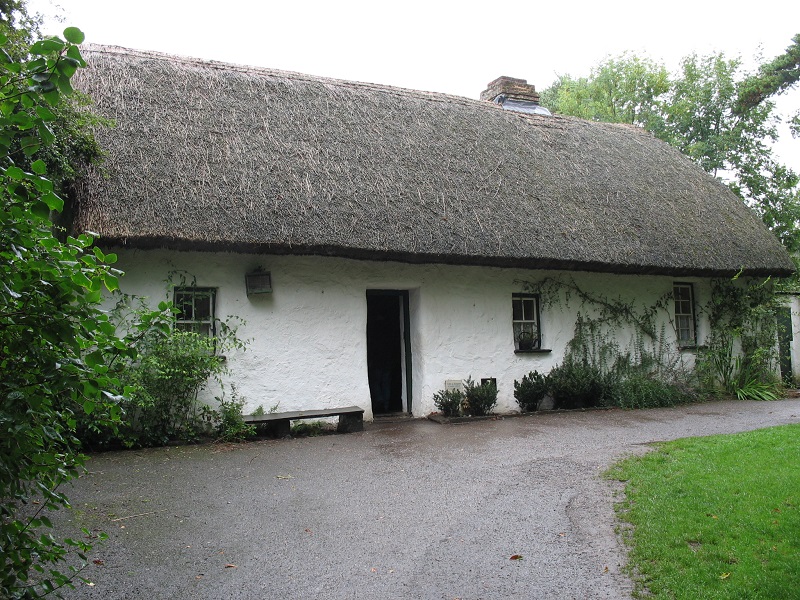
This isn’t Medieval in nature, but it is still an interesting historical perspective. The Folk Park is a recreation of a 19th century Irish village and it’s pretty substantial. I was really surprised by how thick the thatch is on a thatched-roof house! The Park also includes costumed re-enactors to help you really feel like a Modern Day Time Traveler!
There’s also a nice cafe and room for kids to run if you need a break!
Durty Nelly's
The sign says this pub was established in 1620, and a number of websites refer to this as the “Original” Durty Nelly’s that has been in operation since that time, but I can’t find any source that confirms it. I can’t say if it’s true or not, but it’s fun to think you can have a meal or drink in a place that’s been in operation for over 400 years!
Since I visited so early in the day, the pub wasn’t open yet so I wasn’t able to go inside.


